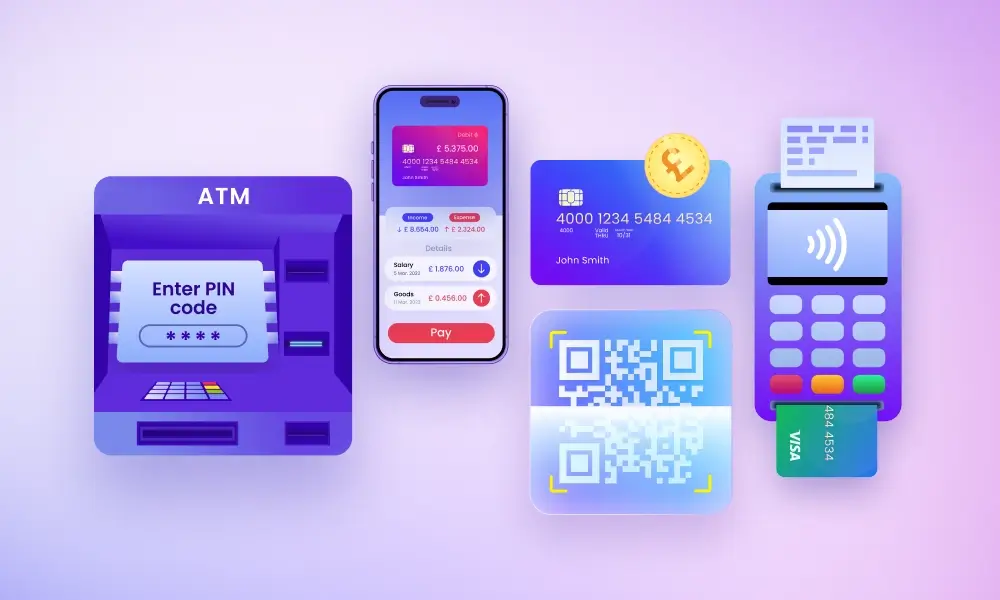For any business, fast and fuss-free transactions are very important at the core, especially in the cutthroat realm of eCommerce. Already, it is very demanding to be competitive, but it can be made achievable, especially if the basics of the business are done right, especially payments that have direct links with the customer trust.
Payments are the aspect of the business that should be stress-free, and they impact customer satisfaction, for which businesses usually invest a lot. Some of the examples would be pay-at-table solutions, contactless payments, taps, and card swipes.
So whether you are someone with an established empire or you are just starting, payment options are key to taking your business to the next level and achieving heightened customer satisfaction. This blog will outline all the payment options for eCommerce, so without further ado, let’s get started right away.
Credit and Debit Cards
As the era progresses, payments are made by credit and debit cards and wireless terminals, but the card method remains the most popular payment method in eCommerce. Their prevalent acceptance and usage, along with their ease of use, make them must have for online transactions.
As security threats are becoming more sophisticated than ever today, we see there has continuous innovation in this method with quite of emphasis on security features. Tokenization and encryption technologies are coded to be the strongest possible so they are more reliable and helpful in protecting sensitive card information.
Wondering what they are? Here you go!
- Tokenization: This deals with replacing card details with a unique identifier or token, reducing the risk of fraud.
- Encryption: The encryption method ensures that data is transmitted during the transaction to foster privacy and security.
These advancements make card payments not only convenient but also safer for consumers and businesses alike.
Digital Wallets
Digital wallets, like Apple Pay, Google Pay, and Samsung Pay, are becoming increasingly popular in recent years and use more than ever before. This is another trend that has been seen. They let users conduct transactions with only a tap or click and securely store their payment details.
Because of their increased security features and ease of use, digital wallets are becoming more and more popular. Some noticeable features they offer are given below:
- One-touch payments: They expedite the checkout process and lower the percentage of abandoned carts.
- Enhanced security: To provide extra protection, biometric authentication—such as fingerprint or facial recognition is used.
Buy Now, Pay Later
In the eCommerce industry, the Buy Now, Pay Later (BNPL) option has become a major participant. What it allows is it lets customers split purchases into smaller, more manageable payments so they can pay at their convenience and don’t linger buying their favorite products.
Customers seeking flexibility will find this approach appealing, and retailers may see an increase in conversion rates.
- Interest-free installments: A lot of BNPL services provide clients with interest-free payment options, which may be enticing.
- Instant approval: To improve the customer experience, the majority of BNPL suppliers offer speedy approval procedures.
Digital Money
As more companies start to accept virtual currencies like Bitcoin, Ethereum, and others, cryptocurrency is beginning to find its way into eCommerce. Cryptocurrency is making its way into eCommerce as more businesses begin to accept digital currencies like Bitcoin, Ethereum, and others.
Although still a niche payment option, it’s gaining attention and traction due to its potential for lower transaction fees and international reach.
- Lower fees: Cryptocurrency transactions often come with lower fees compared to traditional payment methods.
- Global reach: Cryptocurrencies can be used internationally without the need for currency conversion.
However, the volatility and fluctuation in cryptocurrency values and regulatory concerns are challenges that businesses need to consider before integrating them in the fabric of their business.
Bank Transfers and Direct Debit
Bank transfers and direct debit are traditional payment methods that are still relevant in the eCommerce space. They are particularly useful for high-value transactions or recurring payments.
- Instant payments: Allow funds to be transferred almost immediately, improving cash flow for businesses.
- Recurring billing: Direct debit is useful for subscription-based models, providing a steady revenue stream.
These methods offer security and can be a preferred choice for customers who are wary of sharing their card details online.
Emerging Technologies
As technology continues to advance, new payment methods are on the horizon. Biometric payments, voice commerce, and QR codes are becoming more prevalent.
- Biometric payments: Use unique identifiers like fingerprints or facial recognition for authentication, adding an extra layer of security.
- Voice commerce: Allows customers to make purchases using voice commands through smart speakers and assistants.
- QR codes: Simplify payments by scanning a code with a mobile device, often linking to a secure payment page.
These emerging technologies are very exciting and give possibilities for the future of eCommerce to take convenience and security to the next level.
Security Considerations
With so many payment options available, security remains a top priority. Fraud prevention and compliance with regulations like PCI-DSS (Payment Card Industry Data Security Standard) are very important for protecting both merchants and customers and that is why all businesses should gauge every option to the full before getting it incorporated.
- Fraud prevention tools: Bring in use advanced fraud detection systems to identify and lessen looming risks.
- PCI-DSS compliance: Ensure your payment systems meet industry standards for securing cardholder data.
Regularly updating security measures and staying informed about the latest threats can help safeguard your eCommerce business.
Conclusion
We talked about the importance of keeping secure and as many options as possible to give your customers increased flexibility. The availability of a range of payment options for eCommerce would surely continue to strengthen and expand too and would offer multi-sided benefits. The need of the hour is a staunch consideration for businesses and consumers alike. With the upgrade from traditional credit cards to ground-breaking technologies like cryptocurrency and POS payments, staying updated with these developments can help you provide an effortless and protected shopping experience.









